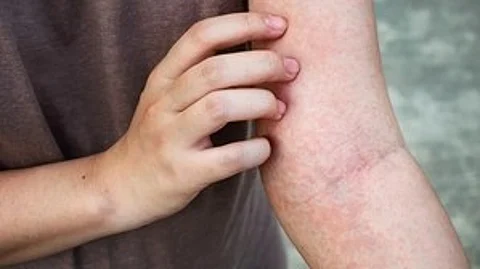
- Home
- न्यूजग्राम
- NewsGram USA
- India
- World
- Politics
- Entertainment
- Culture
- Lifestyle
- Economy
- Sports
- Sp. Coverage
- Misc.
- NewsGram Exclusive
- Jobs / Internships

In such conditions, the equilibrium of microorganisms that keep our skin healthy is often thrown off balance, allowing S. aureus to flourish, said the researchers from Harvard Medical School
Up until now, the itch that occurs with eczema and atopic dermatitis was believed to arise from the accompanying inflammation of the skin.
But the new findings, based on research in mice and in human cells and published in the journal Cell, showed that S. aureus single-handedly causes itch by instigating a molecular chain reaction that culminates in the urge to scratch.
“We’ve identified an entirely novel mechanism behind itch -- the bacterium Staph aureus, which is found on almost every patient with the chronic condition atopic dermatitis. We show that itch can be caused by the microbe itself,” said Isaac Chiu, Associate Professor of immunology in the Blavatnik Institute at HMS.
In the study, mice exposed to S. aureus developed intensifying itch over several days, and the repeated scratching caused worsening skin damage that spread beyond the original site of exposure.
To determine how the bacterium triggered itch, the researchers tested multiple modified versions of the S. aureus microbe that were engineered to lack specific pieces of the bug’s molecular makeup. The team also found a bacterial enzyme called protease V8 which was single-handedly responsible for initiating itch in mice.
Human skin samples from patients with atopic dermatitis also had more S. aureus and higher V8 levels than healthy skin samples.
The analyses showed that V8 triggers itch by activating a protein called PAR1, which is found on skin neurons that originate in the spinal cord and carry various signals -- touch, heat, pain, itch -- from the skin to the brain. Normally, PAR1 lies dormant but upon contact with certain enzymes, including V8, it gets activated.
The research showed that V8 snips one end of the PAR1 protein and awakens it. Experiments in mice showed that once activated, PAR1 initiates a signal that the brain eventually perceives as itch. When researchers repeated the experiments in lab dishes containing human neurons, they also responded to V8.
Treating animals with an FDA-approved anti-clotting medicine successfully blocked the activation of the protein to interrupt this key step in the itch-scratch cycle. The treatment relieved symptoms and minimised skin damage.
The findings can inform the design of oral medicines and topical creams to treat persistent itch that occurs with various conditions linked to an imbalance in the skin microbiome, such as atopic dermatitis, prurigo nodularis, and psoriasis. IANS/KB
